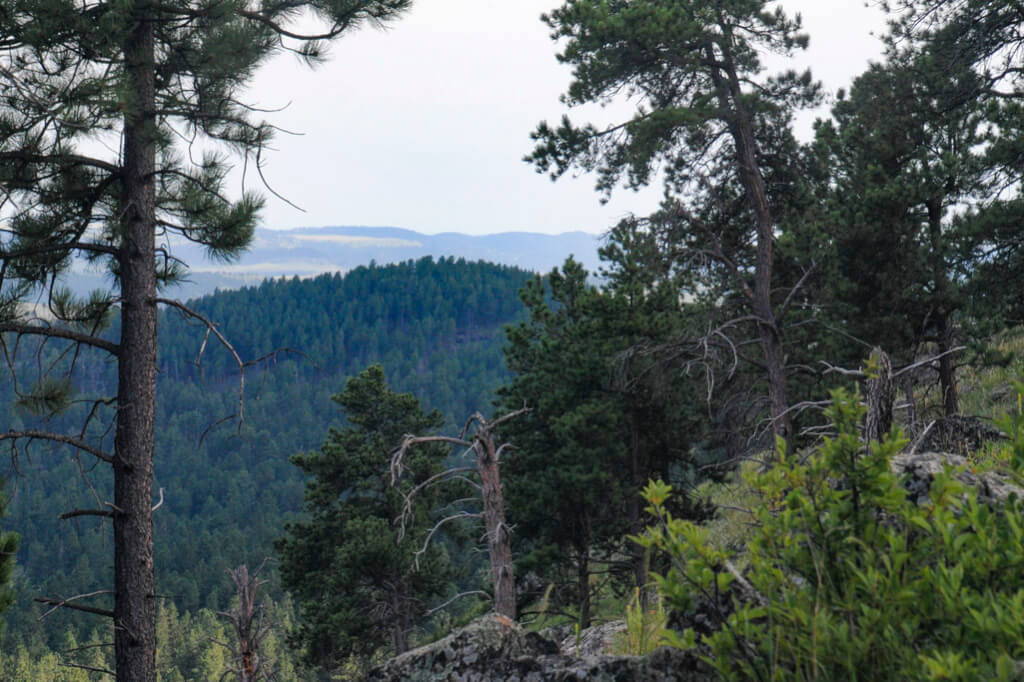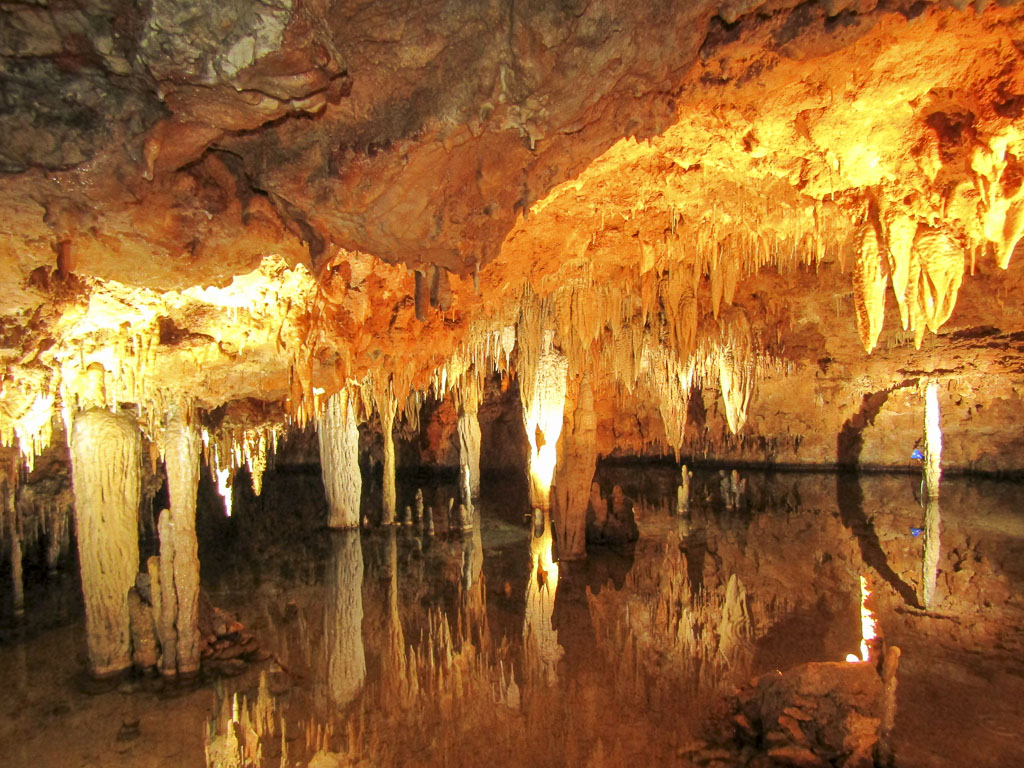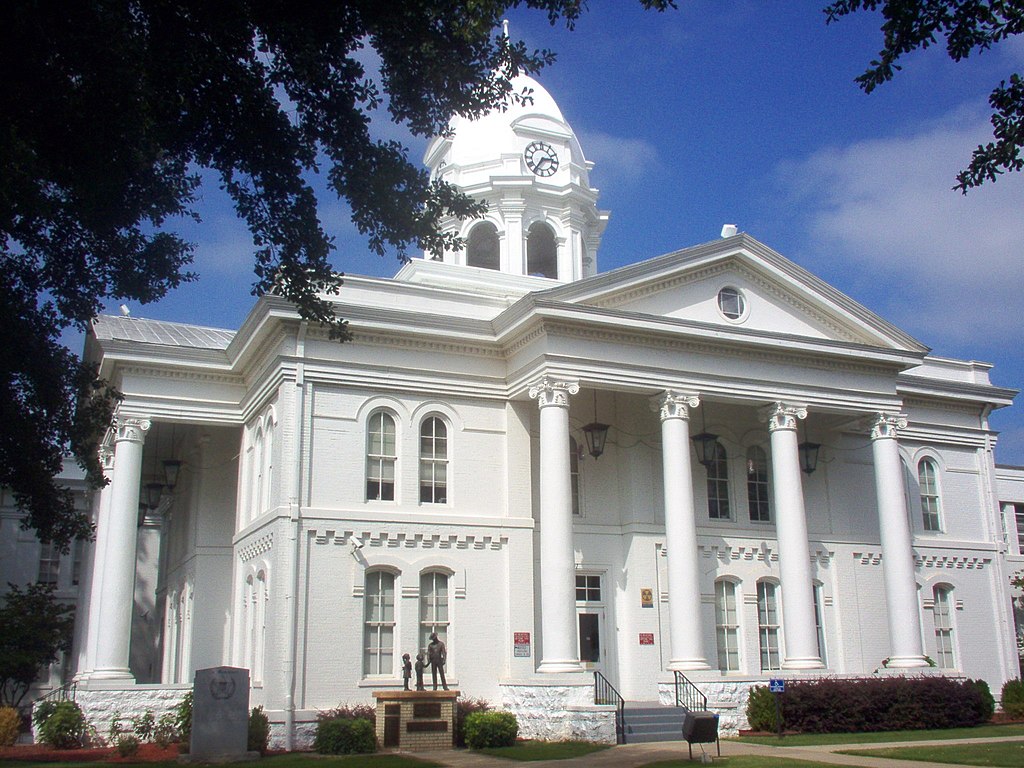The Black Hills are a small mountain range in the West of South Dakota, rising from the Great Plains and extending North into Wyoming. The Black Hills are home to millions of acres of forest & mountains, prairie and monuments like you’ve never seen! There is so much to do there that you could plan an entire Black Hills Vacation. For those with limited time, we will suggest 5 days in the Black Hills, and offer a 5 day Black Hills itinerary, with a focus on visiting Wind Cave National Park
Wind Cave National Park is so much more than just the incredible breathing cave that we are going to talk about later. Once you’re done with the caves, there are some great hikes that travel across really diverse landscapes. And I haven’t even mentioned the nearby sites such as Jewel Cave National Monument, the town of Custer, Custer State Park, the Crazy Horse Monument, and of course Mount Rushmore,
By including these locations in your itinerary, you see how EASILY you can spend 5 days in the Black Hills, around the Wind Cave area. I’m going to suggest the ideal Black Hills 5 day itinerary for outdoor lovers, and lay it all out. There are tonnes of other things to do in the Black Hills, but my itinerary focuses on Wind Cave, and the other outdoor wonders in the area. By the way, I’m Tori, I’m an Aussie living in the USA, and an avid traveler. I recently took 6 months off work to travel, which started with a 3-month road trip across the US to visit as many National Parks as possible! You may have read my previous articles on Lassen Volcanic National Park, or my 4 day Yellowstone itinerary.
My Black Hills Vacation Planner includes:
- Wind Cave National Park History
- Getting to Wind Cave and Getting Around in the Black Hills
- When to Visit the Black Hills
- Black Hills 5 Day Itinerary
- Day 1 – Wind Cave Tour, Hiking Rankin Ridge
- Day 2 – Jewel Cave National Monument, Hiking Centennial Loop
- Day 3 – Wind Cave Tour, Driving Custer Wildlife Loop, Custer Attractions
- Day 4 – Driving Needles Highway, Visiting Sylvan Lake, Hiking Black Elk Peak
- Day 5 – Visiting Crazy Horse Monument, Driving Iron Mountain Road, Visiting Mount Rushmore
- Entry Fees to Black Hills Parks
- Where to Stay for 5 Days in the Black Hills
- Tips for Your Trip
I hope you are ready to plan an amazing Black Hills Vacation!
History of Wind Cave National Park
Wind Cave is a breathing cave, a feature that has drawn the attention of scientists and visitors for years. The cave exchanges air with the outside based on the barometric pressure around the cave entrance. Sounds technical right? Basically, the cave sometimes belches large volumes of air in or out at the entrance to equalize pressure with the outside environment… If you have a more scientific brain that I, you might like to read more about it on the NPS website.
Wind Cave is considered sacred to the Lakota people of the area and has a place in their spoken word history dating back generations. The cave was first noticed by settlers in the early 1800’s and was designated a National Park in 1903, becoming the first cave in the world designated as a National Park.
The cave is considered one of the longest and most complex cave systems in the world. It is currently the sixth longest cave in the world, and its interconnected passages are spread over multiple levels. Based on the air flow in the cave, scientists estimate that only about 5% of the cave has been discovered.

The most significant of the cave’s features are made up of boxwork – honeycomb patterned calcite projecting from the cave walls and ceilings. This boxwork is largely confined to certain levels of the cave. Scientists believe that Wind Cave contains 95% of the boxwork found in any cave worldwide. Fun fact is that the other 5% is found in caves within the Black Hills region.
So, are you ready to visit the first cave that was declared a National Park?
Getting to Wind Cave National Park
There is no public transport servicing Wind Cave National Park, so you must have your own transport. Self-drivers can access the park from the south on US385, through Hot Springs, SD. If you’re coming from the north, say from Custer State Park, then just hop on State Road 87, and it’ll take you right on into the park.
The nearest major airport to Wind Cave National Park is Rapid City Airport. From Rapid City, you would need to rent a vehicle, and it’s approximately 65 miles to Wind Cave (direct). Longer if you detour through the scenic Black Hills, but no point in doing that upon arrival as we do this later on in our 5 day Black Hills itinerary.
Alternatively, if you’re visiting Badlands National Park, you can reach Wind Cave in 4 hours (via the scenic route), quicker if you take the highways.
If you are planning to visit Wind Cave National Park, it is best as part of a Black Hills itinerary, but you could also combine this with a trip to Badlands National Park, or Yellowstone National Park.
When to Visit Wind Cave National Park and the Black Hills of South Dakota
The park is open to visitors year-round. Summer is hot and dry, with occasional thunderstorms, Fall is warm, but with cool evenings, Winter brings the snow, and Spring brings the rain (around 18 inches falls per year, most of it in Spring)
The temperature in the cave remains the same year-round, enabling tours to be scheduled throughout the year (cave tours are offered daily except for Thanksgiving, Christmas, and New Year’s Days). Do keep in mind that you’re in South Dakota, and it’s possible that snow and poor weather can limit access to some of the above ground regions of the park during the winter season. Some of the important roads, such as Needles Highway, which we discuss later, are closed during the winter months.
Check with the National Park service for current road conditions before traveling to the park in the winter.
Now, here’s what you’re going to see and do while you’re visiting the region. I’m going to go ahead and suggest a five day/four-night stay, with 3 of those nights being based in Wind Cave, and 2 nights based in the town of Custer.
Black Hills Itinerary – Day 1:
Wind Cave National Park Cave Tours
I’m presuming you’re going to arrive to Wind Cave in the afternoon. I’d recommend that you head to the Wind Cave Visitor Center and book yourself on at least one of their tours into the cave. Over 100 miles of cave have been explored to date, and park rangers offer visitors an insight into the deep dark depths of the caves on one of the Wind Cave Tours. I recommend having a chat to one of the rangers in the visitor center to determine which tour is the best fit for you. Some of the tours can be reserved in advance. Book in early so that you don’t miss out.
Wind Cave National Park Hiking – Rankin Ridge Trail

Above ground, Wind Cave National Park also has several hiking trails available throughout the park. I hiked two of these trails, and both were incredibly different. On your first day in the park, I’d recommend the Rankin Ridge Trail. It’s a nice warm up after you’ve arrived and settled in to your campsite. This trail is a short 1-mile loop hike heading slightly uphill from the parking lot to the ridge top, where a fire lookout is located. On a clear day, the panoramic views over the National Park and the Black Hills region are outstanding.
Back at camp, check out the Evening ranger programs that are held at the campground. Settle in at the outdoor auditorium to enjoy a roaring open fire and learn about the wildlife, culture or history of the local area.
Black Hills Itinerary – Day 2:
Jewel Cave National Monument

Venture out to the nearby Jewel Cave National Monument in the morning (30 minutes’ drive from Wind Cave). If you don’t already have reserved tickets, then you need to arrive as early as possible to snag a place on the tour.
If you’re wondering whether it’s worth visiting both caves, then believe me, Jewel Cave is a totally different cave in terms of the size of its rooms and the formations seen in the cave. Declared a National Monument in 1908, it is the third longest known cave system in the world and experts here suggest that only approximately 3% of the cave has been discovered.
Jewel Cave is chock full of calcite crystal formations (one of the most extensive displays known), as well as some stalagmites and stalactites, and one super impressive ‘soda straw’ stalactite. The Scenic Tour in Jewel Cave ran for around an hour and a quarter, with a group of 30 visitors.
Be prepared to ascend and descend many sets of stairs as you are led through the large cave rooms. You’ll see some stunning calcite crystal formations in this cave, and further down in the cave, the ranger will kill all the lights, and you’ll experience a serenity in the unnervingly dark environment. The pure sound of the cave, with water trickling down walls in the background was incredible.
Back above ground, there are some hiking trails at Jewel Cave. I didn’t explore them because it was raining, so I’ll leave it to you to chat to the rangers if you want to hike there.
Wind Cave National Park Hiking – Centennial Trail Loop

For the afternoon, I recommend heading back to Wind Cave National Park. After all, that’s what you’ve come for! Head out on a hike on the Lookout Point/Centennial Trail Loop. Approximately 6 miles long, this loop trail meanders its way through grassland, across a burbling stream, and through Prairie Dog Towns before meeting the Ponderosa Pine forests. After descending through the forest, the trail opens out into a delightful small canyon, and wends its way along the creek and through some patches of thick vegetation before making its way up to the parking lot. Towards the end the trail was a little hard to follow, and had some dense patches of Poison Ivy, but I had long pants tucked into my socks and made it through unscathed. This was a rewarding hike thanks to the diversity of the ecosystems that the trail passed through and you’d be crazy to miss it.
For the evening, either check out the ranger program at the campground, or head to nearby Custer to treat yourself to dinner and a drink – there are plenty of options, but I liked Mt Rushmore Brewing Co. for its casual atmosphere and selection of house brewed craft beer!
Black Hills Itinerary – Day 3:
One last Wind Cave National Park Cave Tour

If you’re following my recommendation, this will be your last day at Wind Cave National Park. I’d recommend that you get up, and head to the visitor center to get booked onto your cave tour, then head back to camp for breakfast and to pack down.
I booked on the 1½ hour Fairgrounds Cave Tour. I chose this tour, as it visited both the upper and middle level rooms in the cave, with the opportunity to see some different formations. The tour headed into the cave with a group of approximately 30 visitors. Each of the rooms in the cave varied, but many were full of displays of intricate boxwork, formed when the calcite in the rock eroded to leave thin feathers of limestone behind. Other formations seen on the tour were popcorn, flowstone and frostwork. Deep in the cave, we were seated on a couple of benches, and the ranger killed the lights, giving us the tiniest insight into what it must be like for those intrepid explorers who set out to chart the further reaches of the cave.
Visit Custer State Park and Drive the Wildlife Loop
Custer is South Dakota’s first and largest state park, comprising over 70,000 acres of grassland, pine forest and granite spires. While there are some stunning hikes in the park, most visitors come to Custer to drive the Wildlife Loop road in the hope of seeing the free roaming herd of Bison, and various other mammals in the park – Pronghorn Antelope, Bighorn Sheep, Deer, and of course the infamous begging Burros. I was lucky enough to see all of these!
There’s way more to Custer State Park than the wildlife loop though. If you can spend more than 5 days in the Black Hills, I’d recommend staying for a couple of extra nights to take in all the sights of Custer State Park.




Set up Base in Custer
The nearby town of Custer, South Dakota will make a great base for the remaining 2 days of your 5 day Black Hills itinerary. Custer maintains a good portion of the historic downtown, so it has an old fashioned feeling. It is also centered around tourism, so you can find a number of restaurants, offbeat attractions, and souvenir shops. If you want a different kind of attraction than you have experienced during your 5 days in the Black Hills, visit the historic 1881 Courthouse for regional exhibits. You can even dress up in a period costume.
If you’re into the craft brews, check out Mt. Rushmore Brewing Co., as well as having a range of house brewed beers on tap, they offer a standard pub food menu to satisfy your cravings after a day of exploring. Otherwise, there are many other options for food and drink along Mt Rushmore Road in Custer, just call ahead to make a reservation as tables can be hard to come by at dinner time.
Black Hills Itinerary Day 4 –
So far, a good portion of our 5 days in the Black Hills has been spent exploring the underground scenery in Wind Cave National Park, and at jewel Cave Monument. The Black Hills are known for the amazing above ground scenery too, so Day 4 of our 5 day Black Hills itinerary is about seeing a bit of the hills and rocky formation that the Black Hills are named for.
Drive Needles Highway

The Needles Highway, a renowned scenic route in the Black Hills of South Dakota is composed of narrow roads winding between gigantic rocks, knife edge drop offs, and a couple of one lane tunnels making the drive, at times, a little hair raising. Thankfully, there are plenty of pull outs along the way, allowing you to stop and appreciate the amazing scenery of the granite formations that abound in this region. Head out for this scenic ride early, so you can take in all of the amazing views, and still have plenty of time for other activities in the afternoon.
Visit Sylvan Lake

Towards the end of the Needles Highway (at least, at the end of the nail biting section), lies Sylvan Lake. Sylvan Lake is the ultimate resort area in the Black Hills, and immediately on arriving, it was not difficult to see why. The lake, created in the 1800’s, as part of Custer State Park, is set at the foot of some mighty granite peaks, and has its own collection of granite outcrops surrounding its shores. If you’re lucky enough to snag a campsite out there, the lake looks like the perfect location to enjoy canoeing, kayaking or SUP.

There’s a couple of hikes out by Sylvan Lake as well – Sunday Gulch, Little Devil’s Tower and Cathedral Spires to name a few. I personally recommend the hike to Black Elk Peak. Named after a famous Oglala-Lakota Medicine Man, this is the highest peak west of the Rocky Mountains, standing at 7242 feet. On a good day, it’s said that you can see four states, several SD cities, the back side of Mt. Rushmore and Badlands National Park from the stone fire tower. I arrived at the peak in a total white out thanks to a storm that rolled in while I was on the trail. This trail gains 1100ft in elevation on the 3.5m to the summit, but it’s gradual, and definitely worth the effort (even when you can’t see a thing from up there!)
After making your way back to the trail head, it will likely be late in the afternoon. Head back to Custer, the easy way, via route 89, Custer Lake Road.
Black Hills Itinerary Day 5
Spending 5 days in the Black Hills without making a stop at the world renowned monuments in the area would almost be a crime. This last day of our Black Hills 5 day itinerary is about the monuments. If you will be leaving the area at the end today’s adventures, be sure to pack up your belongings and check out of your hotel before heading out.
Visit the Crazy Horse Monument

The Crazy Horse Monument on Thunderhead Mountain has been a work in progress for 70 years now, but it is quite impressive as it is. An Oglala Lakota warrior, Crazy Horse was revered by his people, and Thunderhead Mountain was a sacred place. The vision is that the monument will be part of a Native American Cultural Center, including museums and a university. When completed, the monument will be the tallest statue in the western hemisphere, and already the head of Crazy Horse is much larger than all the presidential portraits at Rushmore.
There is a smaller statue on site, so you can see what the completed monument will look like, and you can see the continuing process of carving the mountain as it happens. Some of the museums that are part of the overall vision are complete so can be included in your visit. The Sculptures Home and Studio is the original log cabin used by the sculptor Korczak, who designed and began the masterpiece, and many or his earlier works can be seen. the Mountain Carving Gallery tells the story of how the work of sculpting a mountain side is completed. The most fascinating though, is the Indian Museum of North America, which inludes documents, photos, and artifacts that tell the story of over 300 Native American Nations.
Drive Iron Mountain Road

Peter Norbeck of Needles Highway fame was also responsible for masterminding the Iron Mountain Road. Along this road, he designed two tunnels that frame the views of the faces of the ex-presidents of Mt Rushmore. This road is also a little nail biting, with three tricky tunnels along the route, but the views of Mount Rushmore through two of the tunnels more than made up for it, and I couldn’t think of a better way to arrive to the memorial. Don’t hesitate, just drive it.
Visit Mount Rushmore

The faces of four presidents; Washington, Jefferson, Roosevelt, and Lincoln were carved into the granite hillside of Mount Rushmore over a period of 14 years. The project was finally completed in October 1941. During this time, around 450,000 tonnes of rock was blasted from the mountain to create this monument. The presidents still stand sentinel over the Black Hills to this day – welcoming nearly 3 million visitors per year. The memorial is an impressive ode to the Presidents, and an incredible engineering and sculptural achievement. You should walk the short trails that lead to the base of the mountain after checking out the information in the Monument visitor center.
Entry fees for the parks on your Black Hills Itinerary
There are no fees to enter Wind Cave National Park. They do, however, charge a fee for the cave tours. Fees vary according to the tour you select – see the NPS website for current fees. (https://www.nps.gov/wica/planyourvisit/fees.htm)
Further afield, there is a fee of $20 per vehicle/$10 per motorbike to enter Custer State Park. The Custer State Park permit is valid for seven days. There’s no fee to enter the park at Mt Rushmore, but you will need to pay a fee for parking, and that permit is valid for the remainder of the calendar year.
Where to stay during your Black Hills Vacation
The only campground in the Wind Cave National Park, Elk Mountain Campground is open year-round. This is a first-come, first-served campground, which usually does not fill. Each of the campsites has a picnic table & fire ring. Drinking water and flush toilets are available in the summer months only, so come prepared if you are visiting off season. Backcountry camping is permitted in the northwest area of the park – check with the park rangers for guidelines.
Alternative campsites are available 15 minutes south, in Hot Springs, or 30 minutes north in Custer State Park, and throughout the Black Hills National Forest.
If you prefer to stay in a little more luxury, then the nearby towns of Hot Springs and Custer offer a range of accommodations, from Cabins to B&B’s as well as hotels & motels.
Find a great deal on your hotel in Custer right now!
Tips for your Black Hills Vacation, and Visiting Wind Cave National Park
Ensure your vehicle is in good repair and fill up with gas as often as possible. There are no gas stations in the park, so start with a full tank, and fill up outside the park if you head out to Custer for the day.
Carry lots of water at all times. At least a gallon per person is recommended if you are planning any type of outdoor exploration. If it is hot, or hiking is planned, carry even more.
The cave temperature is a constant 53 degrees Fahrenheit (11 degrees Celsius), so pack in layers – always carry a warm layer & a waterproof layer when you’re hiking. A good pair of shoes with a non-slip sole is also recommended for the cave tour, as you’ll be walking on some uneven surfaces.
If you are visiting both Wind Cave and Jewel Cave, keep in mind that you must wear different clothes & shoes into each of the caves to prevent the spread of white nose syndrome in bats.
Always carry a map, and practice safe hiking. Let someone know where you’re going, and when you should be back. Large wildlife such as bison and elk are present in the park, so be aware of your surroundings. I’d also recommend staying away from Prairie Dogs as much as possible, there is evidence of them being carriers of the plague.
Don’t rely on your phone while you’re in the park. I found there were only a few locations in the park that I could get a signal. It’s a good idea to download offline maps for use during your visit.
PIN this, so your friends don’t miss out on the fun!


If you love caves, you might also like:
If you love National Parks where you can see wildlife, you may want to read more about:
Redwoods National and State Parks
For another great outdoor adventure in the Midwest, try:
About the Author

Tori is an Aussie who now lives in Philadelphia, PA, in the US. She worked for 9 years in the travel industry, and enjoys researching and planning trips as much as she loves the travel itself. Recently she quit her job to travel for 6 months, starting with a road trip across the United States. She is currently on a road trip through New Zealand. You can find more of her adventures at West of Anywhere.






3 thoughts on “Visiting Wind Cave National Park – A Black Hills Vacation”